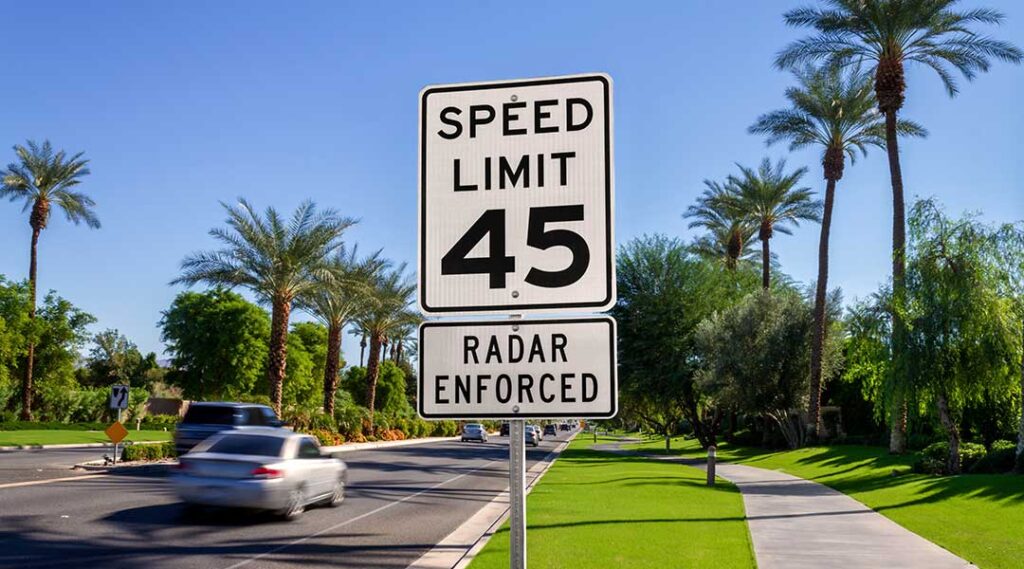This post was originally published on www.progressive.com
The federal government has established national speed limits at various times, such as the 1942-1945 “Victory Speed Limit” of 35 mph to limit gas and rubber usage during World War II. Individual states have set speed limits in more recent years.
Types of speed limits
In general, there are two kinds of speed limits. Posted speed limits are indicated by signs posted along the road. Statutory speed limits are set when the type of road determines baseline speed limits. The state’s motor vehicle laws define statutory limits, which are applicable if there’s no posted speed limit.
While you should always follow posted speed limits, statutory speed limits ensure a limit is in place on all roads. For example, some states might have a statutory speed limit of 70 mph for interstates and 55 mph for rural highways. If you’re traveling on a state highway in a rural area, the speed limit would be 55 mph even if no speed limits are posted.
How are speed limits determined?
Road projects start with a “design speed” — an expected speed for the road that guides decisions like how much to bank corners. Once the road is built, engineers perform a study to see the real speed of motorists on the road.
The speed study evaluates the 85th percentile speed, or the rate which 85% of motorists travel while using the road. Traffic engineering assumes that most people will travel safely and reasonably for the road in question. Observing how most drivers behave is key to setting speed limits.
Speed limit guidelines
Penalties for speeding vary from state to state. All states establish penalties for exceeding the legal speed. The severity of the penalty varies from a small fine — $50 or less — up to significant fines (hundreds of dollars), license suspensions, and jail time.
While a few states have speeding laws that treat all speeding violations the same way, most states have sliding penalties based on the severity of the offense.
For example, a state might have one fine for exceeding the speed limit by 1-10 mph, a larger fine for exceeding the limit by 10-20 mph, and an even more significant fine—along with the risk of license suspension and jail time — for speeding more than 20 mph over the limit. States often have increased penalties in areas of high risk, such as construction sites and school zones.
Check with your state’s DMV for a breakdown of state penalties for speed limit violations.
Speed limits violations and insurance
Most insurance companies will raise your rates or revoke any “safe driver discounts” if law enforcement catches you speeding or engaging in other reckless or aggressive driving behaviors. You don’t need to alert your insurance company to the ticket. They have access to your driving record and will usually check if you’ve had tickets or other violations before renewing your policy. Learn how speeding tickets affect insurance.
Individual states decide how speed limits are established. They set both posted speed limits, and statutory speed limits based on the type of road, and these laws apply even when there is no posted speed limit sign. Driving safely saves lives and it saves money on your insurance rates.
[ad_1]
